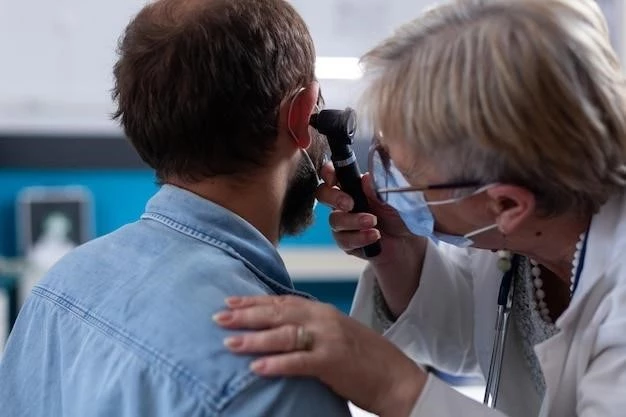Article Plan⁚ Disease ౼ Tracheal Agenesis
Overview of Tracheal Agenesis
Tracheal agenesis is a rare and lethal congenital anomaly characterized by a complete interruption or absence of the trachea․ It is a rare birth defect with a prevalence of less than 1 in 50,000, where the trachea fails to develop properly․ In some cases, the trachea is severely underdeveloped or completely absent, leading to significant respiratory challenges․ Tracheal agenesis is a life-threatening condition that often presents as an emergency, requiring immediate medical attention and intervention to support breathing and ensure the infant’s survival․
Tracheal agenesis can result in various symptoms such as respiratory distress, bluish skin color (cyanosis), and difficulties in breathing․ The condition poses significant challenges for medical professionals due to its rarity and severity․ Diagnosis of tracheal agenesis is crucial for timely intervention and management of the condition, as it has a high mortality rate․ Despite being a rare anomaly, tracheal agenesis requires prompt recognition and specialized care to improve outcomes and enhance survival rates․
Prevalence and Incidence
Tracheal agenesis is a rare congenital anomaly․ The prevalence is less than 1 in 50,000 live births, with a male to female ratio of approximately 2⁚1․ This condition may occur as an isolated defect, but in about 93% of cases, it is part of various polymalformative syndromes․ The diagnosis of tracheal agenesis requires a high index of suspicion, as it is typically associated with other congenital anomalies․ Despite its rarity, tracheal agenesis poses a significant challenge due to its potentially fatal nature and the complexities involved in managing the condition․
Causes and Risk Factors
The exact causes of tracheal agenesis remain unclear, but the condition is believed to arise during fetal development due to disruptions in the normal formation of the trachea․ Some potential risk factors that may contribute to tracheal agenesis include genetic factors, environmental influences, or a combination of both․ Despite ongoing research, the specific mechanisms leading to tracheal agenesis are still being investigated․ Understanding the underlying causes and risk factors is crucial for improving early detection and management strategies for this rare and life-threatening condition․
Signs and Symptoms
Tracheal agenesis is a rare congenital anomaly that can present with various signs and symptoms․ Newborns with tracheal agenesis may exhibit respiratory distress, bluish skin color (cyanosis), and difficulties in breathing shortly after birth due to the absence or underdevelopment of the trachea․ Other symptoms may include a lack of audible cry, polyhydramnios during pregnancy, and an inability to establish proper airflow between the larynx and the alveoli of the lungs․ Recognizing these early signs is crucial for the timely diagnosis and management of tracheal agenesis to improve outcomes and ensure appropriate interventions are implemented․
Diagnosis of Tracheal Agenesis
Diagnosing tracheal agenesis requires a comprehensive evaluation of clinical symptoms, imaging studies such as X-rays, CT scans, or MRIs, and often collaboration with specialists in neonatology, pediatric surgery, and pulmonology․ In newborns presenting with respiratory distress, cyanosis, and an inability to establish proper airflow, tracheal agenesis should be suspected․ Additionally, prenatal ultrasound may reveal findings suggestive of tracheal anomalies, prompting further investigation postnatally․
The absence of a visible trachea on imaging studies and the inability to pass a tube into the trachea are key indicators of tracheal agenesis․ Differential diagnoses including tracheal stenosis, laryngeal atresia, or esophageal obstruction must be ruled out․ Timely and accurate diagnosis of tracheal agenesis is essential for appropriate management, which often involves a multidisciplinary team approach to address the complex respiratory challenges posed by this rare and life-threatening condition․
Classification and Types of Tracheal Agenesis
Tracheal agenesis is classified as a rare and lethal congenital anomaly characterized by a complete interruption or absence of the trachea․ This condition may manifest as either complete absence (agenesis) or severe underdevelopment (atresia) of the trachea․ In cases of agenesis, the sublaryngeal trachea is missing, while atresia involves the congenital obliteration of the tracheal lumen, leaving behind a fibromuscular streak without cartilages․
The terms tracheal agenesis (TAG) and tracheal atresia (TAT) are often used interchangeably in the medical literature, commonly referred to as TA․ Tracheal agenesis is characterized by the absence of the trachea below the larynx․ It is essential to differentiate between agenesis and atresia to guide appropriate management strategies and interventions for individuals with this rare and life-threatening condition․
Treatment Options
Treatment options for tracheal agenesis depend on the severity of the condition and the presence of associated anomalies․ Immediate interventions often involve establishing an airway through emergency measures such as intubation or tracheostomy to ensure proper ventilation․ Surgical interventions aiming to reconstruct the trachea or create a connection between the larynx and lower airways may be considered in select cases․

Due to the complexity and rarity of tracheal agenesis, a multidisciplinary team approach involving neonatologists, pediatric surgeons, pulmonologists, and anesthesiologists is crucial for optimal management․ The delicate balance between supporting respiratory function and treating associated anomalies is essential in the treatment of tracheal agenesis to improve outcomes and enhance survival rates․
Prognosis and Complications
Tracheal agenesis is a rare and typically fatal congenital anomaly with a high mortality rate․ The prognosis for individuals diagnosed with tracheal agenesis depends on various factors, including the extent of airway involvement, associated anomalies, and promptness of intervention․ Complications associated with tracheal agenesis can be severe and life-threatening, often requiring immediate medical attention and specialized care․
Due to the complexity of managing tracheal agenesis, individuals diagnosed with this condition may experience challenges with respiratory function, feeding difficulties, and potential long-term complications․ The prognosis for tracheal agenesis remains guarded, highlighting the importance of early diagnosis, multidisciplinary management, and ongoing support to optimize outcomes and improve quality of life for affected individuals․
Case Studies and Research
Research on tracheal agenesis continues to shed light on this rare and often fatal congenital anomaly․ Case studies highlight the challenges faced in diagnosing and managing tracheal agenesis, emphasizing the critical need for multidisciplinary collaboration and prompt interventions to improve outcomes․
Ongoing studies explore novel treatment approaches, imaging techniques, and long-term prognosis for individuals with tracheal agenesis․ Research efforts aim to enhance early detection, optimize surgical interventions, and address associated anomalies to provide better care and support for affected individuals and their families․ Constant efforts in case studies and research are essential for advancing our understanding and management of tracheal agenesis․
Conclusion and Future Directions
In conclusion, tracheal agenesis remains a rare and life-threatening congenital anomaly that poses significant challenges in diagnosis and management․ Despite advances in medical knowledge and technology, the prognosis for individuals with tracheal agenesis remains guarded due to the complexity of the condition and associated complications․
Future directions in research should focus on advancing early detection methods, exploring innovative treatment modalities, and enhancing long-term outcomes for individuals with tracheal agenesis․ Multidisciplinary collaboration, ongoing clinical studies, and improved supportive care are essential in addressing the complexities of tracheal agenesis and improving the quality of life for affected individuals․

